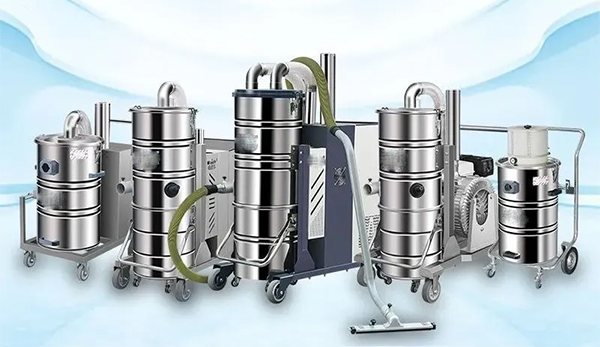What Are the Maintenance Steps of a Vacuum Cleaner?
Vacuum cleaner acting weak or starting to smell bad? That’s often a sign it’s overdue for a little love and care.
To maintain a vacuum cleaner, regularly empty the dust bin or replace the bag, clean or change filters, inspect the brush roll, clear clogs, and store it in a dry, safe place.
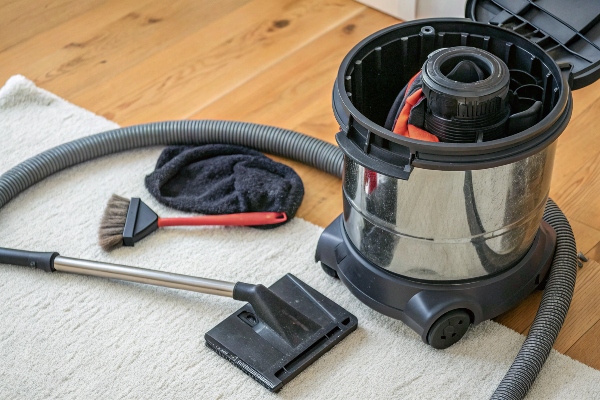
vacuum cleaner maintenance tips
Even the best vacuum cleaner needs regular upkeep to work its best. Each type has its own maintenance priorities. For instance, bagged vacuums need timely bag replacements. Wet-dry types must have their dirty tanks cleaned after every use. From filters to brush rolls, a few small habits can prevent expensive breakdowns.
How to Maintain and Clean Your Vacuum Cleaner?
Does your vacuum seem louder or smell musty? You might be skipping the basics.
To maintain your vacuum, clean or replace filters every 3–6 months, empty the dust bin after use, and clear out hair from the brush roll.

How to Clean a Vacuum Cleaner
Cleaning the Dust Bin or Bag
| Vacuum Type | What to Do | How Often |
|---|---|---|
| Bagless | Empty bin after each use | Every time |
| Bagged | Replace when ⅔ full | Weekly or biweekly |
| Wet Tank Model | Rinse dirty tank after each use | Every time |
Dust bins, if left uncleaned, cause suction loss1. Wet vacuums develop mold and bad odors without tank rinsing. Bagged models lose power when airflow is restricted2. If your vacuum smells or leaves debris behind, it’s likely time to check these areas.
Cleaning or Replacing Filters
| Filter Type | Maintenance Action | Frequency |
|---|---|---|
| Washable filter | Rinse and dry fully | Every 3–6 months |
| Non-washable | Replace with new filter | Every 6–12 months |
| HEPA | Clean/replace more frequently | Monthly in dusty homes |
Filters keep fine particles from damaging your motor and escaping back into your home. A clogged filter can cause overheating and suction loss. HEPA filters are especially important for people with allergies or pets. Always check the manual to avoid damaging non-washable filters.
What Is the Proper Maintenance of a Vacuum Cleaner?
Are you only emptying the bin and calling it maintenance? That’s not enough.
Proper vacuum maintenance includes checking all moving parts, clearing clogs, replacing worn belts, and storing the vacuum safely when not in use.
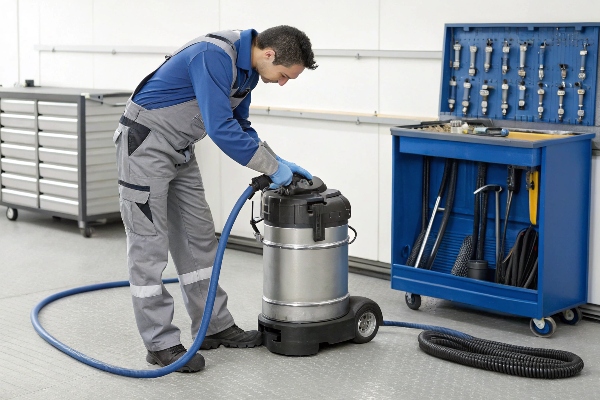
Vacuum Cleaner Service and Maintenance
Inspecting the Brush Roll and Belts
| Task | Why It Matters | How Often |
|---|---|---|
| Clean brush roll | Hair and string cause motor stress | Monthly |
| Replace brush roll | Worn bristles reduce deep cleaning | Yearly |
| Check belt | Loose belt = reduced brush spin | Every 6 months |
Hair wraps can stop the brush from turning. That means your vacuum just pushes dirt around instead of picking it up. Use scissors or tweezers to remove hair. If you hear squeaking or smell burning rubber3, the belt may need replacing4.
Clearing Blockages
| Component | Common Problem | Fix |
|---|---|---|
| Hose | Clogs from debris | Push a broomstick through |
| Nozzle | Pet hair clogs | Check regularly and remove |
| Attachments | Stuck particles | Rinse or blow out debris |
Low suction is often caused by blockages, not motor failure. Check all removable parts. Shine a flashlight through hoses to spot blockages. Many people skip this step and end up replacing a vacuum that only needed 10 minutes of care.
Top 10 Vacuum Maintenance Tips to Extend Its Lifespan?
Tired of buying a new vacuum every 2 years? You might be using it wrong.
To make your vacuum last longer, follow simple habits: clean filters, clear clogs, store it safely, and never let the bag or bin get too full.
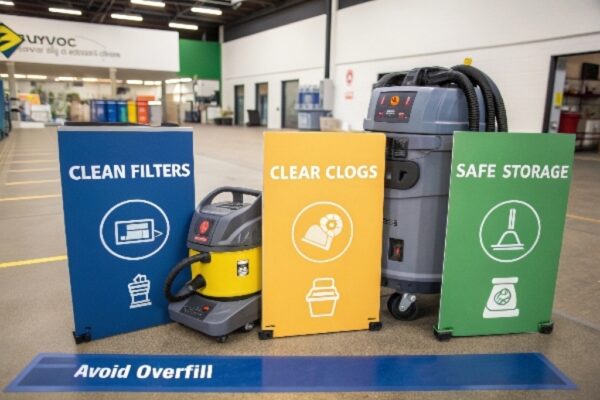
Top Tips to Extend Your Vacuum Cleaner’s Lifespan
10 Easy Maintenance Habits
| Tip Number | Action | Reason |
|---|---|---|
| 1 | Empty bin or bag early | Avoid motor strain |
| 2 | Clean filters regularly | Maintain airflow |
| 3 | Remove hair from brush roll | Keep it spinning freely |
| 4 | Check for clogs | Ensure consistent suction |
| 5 | Replace belts before they snap | Prevent sudden motor issues |
| 6 | Wipe vacuum body after use | Avoid dust build-up in vents |
| 7 | Unplug before servicing | Safety first |
| 8 | Store in a cool, dry area | Prevent moisture damage |
| 9 | Follow manual for part replacement | Don’t damage the machine |
| 10 | Service professionally every 1–2 years | Extend usable lifespan |
A vacuum cleaner is a machine, and every machine lasts longer with basic care. Even a top-brand vacuum won’t last long if it’s stuffed with hair, running with a dirty filter, or stored in a humid room.
What Is the Useful Life of a Vacuum Cleaner?
Wondering if your vacuum is too old to save? There’s a rule of thumb.
Most vacuum cleaners last 5–8 years with regular maintenance. With professional servicing and part replacement, some can last over 10 years.
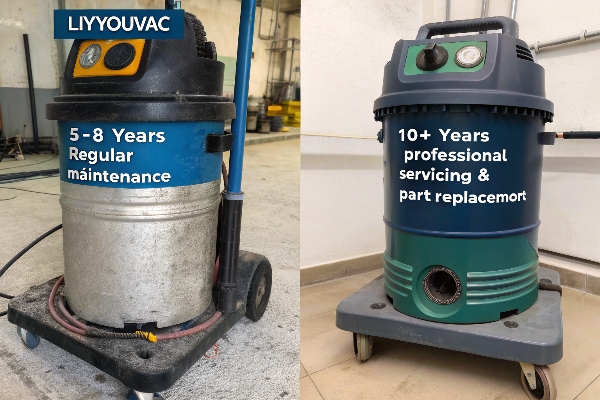
Vacuum Cleaner Longevity: When to Replace It?
When to Replace Your Vacuum
| Condition | Sign You Need a New One |
|---|---|
| Weak suction even after cleaning | Internal motor damage likely |
| Cracked hose or broken parts | Repair cost may be too high |
| Loud noise or burning smell | Belt or motor issues |
| Overheats quickly | Clogged vents or worn motor |
If your vacuum is clean but still fails to pick up dirt, it’s probably time to invest in a new one. However, you can extend the life of most vacuums5 by following basic care habits. At Liyyouvac, many of our clients keep units running for a decade just by following routine maintenance6.
Conclusion
With simple habits and regular checks, your vacuum can stay strong, clean, and reliable for years.
-
Understanding suction loss can help you maintain your vacuum's efficiency and prolong its lifespan. ↩
-
Learn about the impact of restricted airflow on vacuum performance to ensure optimal cleaning results. ↩
-
Learn about the potential issues with your vacuum and how to address them to maintain its longevity and efficiency. ↩
-
Find out the signs of a worn vacuum belt and how to replace it for optimal performance and cleaning power. ↩
-
Find valuable strategies to enhance the longevity of your vacuum and save money in the long run. ↩
-
Learn effective routine maintenance techniques to keep your vacuum running smoothly for years. ↩

